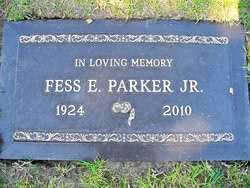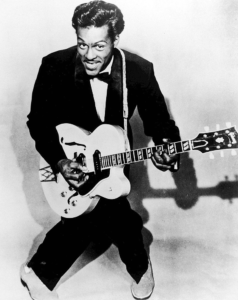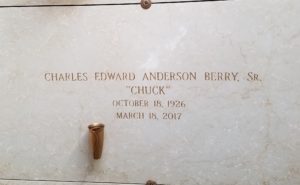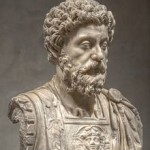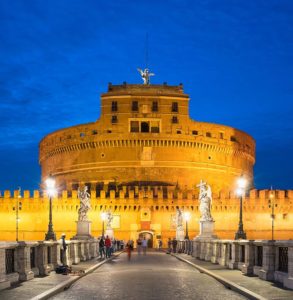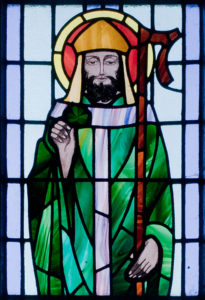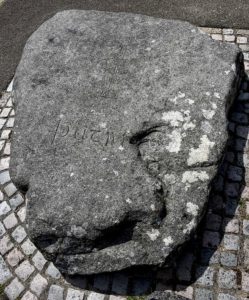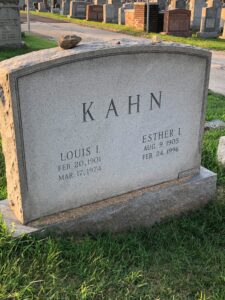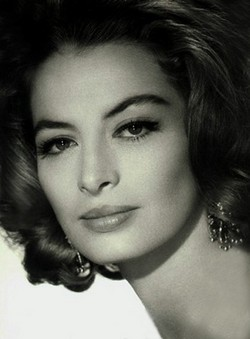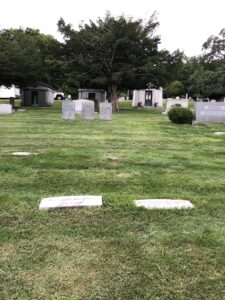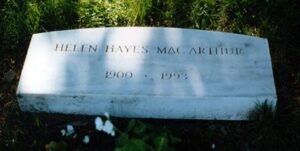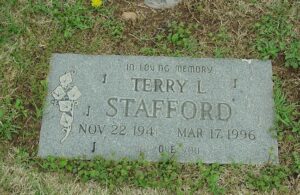On this day in 1827, composer and pianist, Ludwig van Beethoven died in Vienna at the age of 56. Born in Bonn, then the capital of the Electorate of Cologne and part of the Holy Roman Empire of the German Nation, now in present-day Germany. Beethoven was likely born on 16 December 1770. He moved to Vienna in his early 20’s, studying with Joseph Haydn and quickly gained a reputation as a virtuoso pianist. His hearing began to deteriorate in the late 1790s, yet he continued to compose, conduct, and perform, even after becoming completely deaf. In my opinion, Beethoven is the crucial figure in the transition between the Classical and Romantic eras in Western art music and he remains one of the most famous and influential composers of all time. My favorite Beethoven composition is his Piano Concerto No. 5 in E-flat major, Op. 73, the “Emperor Concerto”. Beethoven never married though he apparently had several loves. He met Giulietta Guicciardi in about 1800 and mentions his love for her in a letter to a friend. Beethoven dedicated to Giulietta his Sonata No. 14, popularly known as the “Moonlight” Sonata. Marriage plans were thwarted by Giulietta’s father and perhaps Beethoven’s common lineage. Perhaps Beethoven proposed to Josephine Deym, at least informally. While his feelings were apparently reciprocated, she turned him down possibly due to the fact that she was born of nobility and he was a commoner. It is also likely that he considered proposing (whether he actually did or not is unknown) to Therese Malfatti, the dedicatee of “Für Elise” in 1810; his common status may also have thwarted those plans. Apparently while staying in the Bohemian spa town of Teplitz, he wrote three love letters to an “Immortal Beloved.” While the identity of the intended recipient is the subject of ongoing debate, the most likely candidate, based on people’s movements and the contents of the letters, is Antonie Brentano, a married woman with whom he had begun a friendship in 1810.
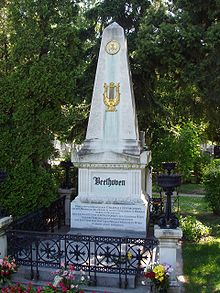 The Final Footprint – Beethoven was initially interred in the Währing cemetery, north-west of Vienna, after a requiem mass at the church of the Holy Trinity (Dreifaltigkeitskirche). The funeral procession on 29 March 1827 was attended by an estimated 20,000 Viennese citizens. Franz Schubert, who would die the following year and would be buried next to Beethoven, was one of the torchbearers. Beethoven’s remains were exhumed for study in 1862, and moved in 1888 to Vienna’s Zentralfriedhof, the largest and most famous cemetery among Vienna’s nearly 50 cemeteries. His grave is marked by a large marble monument. Eddie Van Halen‘s middle name “Lodewijk” was derived from Beethoven (Lodewijk is the Dutch version of Ludwig). Other notable Final Footprints at Zentralfriedhof include; Johannes Brahms, Antonio Salieri, Schubert, Johann Strauss I, and Johann Strauss II. In addition, a cenotaph was erected there in honour of Wolfgang Amadeus Mozart.
The Final Footprint – Beethoven was initially interred in the Währing cemetery, north-west of Vienna, after a requiem mass at the church of the Holy Trinity (Dreifaltigkeitskirche). The funeral procession on 29 March 1827 was attended by an estimated 20,000 Viennese citizens. Franz Schubert, who would die the following year and would be buried next to Beethoven, was one of the torchbearers. Beethoven’s remains were exhumed for study in 1862, and moved in 1888 to Vienna’s Zentralfriedhof, the largest and most famous cemetery among Vienna’s nearly 50 cemeteries. His grave is marked by a large marble monument. Eddie Van Halen‘s middle name “Lodewijk” was derived from Beethoven (Lodewijk is the Dutch version of Ludwig). Other notable Final Footprints at Zentralfriedhof include; Johannes Brahms, Antonio Salieri, Schubert, Johann Strauss I, and Johann Strauss II. In addition, a cenotaph was erected there in honour of Wolfgang Amadeus Mozart.
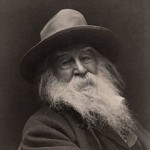 On this day in 1892, poet, essayist, journalist, teacher, government clerk, volunteer nurse during the Civil War, The Father of Free Verse, Walt Whitman died in Camden, New Jersey at the age of 72. Born Walter Whitman on 31 May 1819, in West Hills, Town of Huntington, Long Island. A humanist, he was a part of the transition between transcendentalism and realism, incorporating both views in his works. In my opinion, Whitman is among the most influential poets in the American canon. His work was very controversial in its time, particularly his poetry collection Leaves of Grass, which was described as obscene for its overt sexuality. First published in 1855 with his own money, Leaves of Grass was an attempt at reaching out to the common person with an American epic. He continued expanding and revising it until his death in 1892. Whitman never married.
On this day in 1892, poet, essayist, journalist, teacher, government clerk, volunteer nurse during the Civil War, The Father of Free Verse, Walt Whitman died in Camden, New Jersey at the age of 72. Born Walter Whitman on 31 May 1819, in West Hills, Town of Huntington, Long Island. A humanist, he was a part of the transition between transcendentalism and realism, incorporating both views in his works. In my opinion, Whitman is among the most influential poets in the American canon. His work was very controversial in its time, particularly his poetry collection Leaves of Grass, which was described as obscene for its overt sexuality. First published in 1855 with his own money, Leaves of Grass was an attempt at reaching out to the common person with an American epic. He continued expanding and revising it until his death in 1892. Whitman never married.
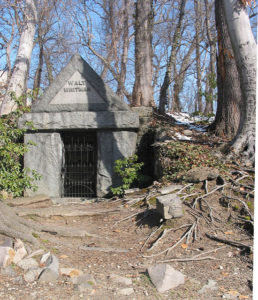 The Final Footprint – A public viewing of his body was held at his Camden home; over one thousand people visited in three hours. Apparently, Whitman’s oak coffin was barely visible because of all the flowers and wreaths left for him. Four days after his death, he was entombed in the private mausoleum he had built at Harleigh Cemetery in Camden. Another public ceremony was held at the cemetery, with friends giving speeches, live music, and refreshments. Whitman’s friend, the orator Robert Ingersoll, delivered the eulogy. Later, the remains of Whitman’s parents and two of his brothers and their families were moved to the mausoleum. Whitman has been claimed as America’s first “poet of democracy”, a title meant to reflect his ability to write in a singularly American character. A British friend of Walt Whitman, Mary Smith Whitall Costelloe, wrote: “You cannot really understand America without Walt Whitman, without Leaves of Grass… He has expressed that civilization, ‘up to date,’ as he would say, and no student of the philosophy of history can do without him.”. Poet Ezra Pound called Whitman “America’s poet… He is America.”. Andrew Carnegie called him “the great poet of America so far”. Whitman considered himself a messiah-like figure in poetry. William Sloane Kennedy, speculated that “people will be celebrating the birth of Walt Whitman as they are now the birth of Christ”. The literary critic, Harold Bloom wrote, as the introduction for the 150th anniversary of Leaves of Grass:
The Final Footprint – A public viewing of his body was held at his Camden home; over one thousand people visited in three hours. Apparently, Whitman’s oak coffin was barely visible because of all the flowers and wreaths left for him. Four days after his death, he was entombed in the private mausoleum he had built at Harleigh Cemetery in Camden. Another public ceremony was held at the cemetery, with friends giving speeches, live music, and refreshments. Whitman’s friend, the orator Robert Ingersoll, delivered the eulogy. Later, the remains of Whitman’s parents and two of his brothers and their families were moved to the mausoleum. Whitman has been claimed as America’s first “poet of democracy”, a title meant to reflect his ability to write in a singularly American character. A British friend of Walt Whitman, Mary Smith Whitall Costelloe, wrote: “You cannot really understand America without Walt Whitman, without Leaves of Grass… He has expressed that civilization, ‘up to date,’ as he would say, and no student of the philosophy of history can do without him.”. Poet Ezra Pound called Whitman “America’s poet… He is America.”. Andrew Carnegie called him “the great poet of America so far”. Whitman considered himself a messiah-like figure in poetry. William Sloane Kennedy, speculated that “people will be celebrating the birth of Walt Whitman as they are now the birth of Christ”. The literary critic, Harold Bloom wrote, as the introduction for the 150th anniversary of Leaves of Grass:
If you are American, then Walt Whitman is your imaginative father and mother, even if, like myself, you have never composed a line of verse. You can nominate a fair number of literary works as candidates for the secular Scripture of the United States. They might include Melville’s Moby-Dick, Twain’s Adventures of Huckleberry Finn, and Emerson’s two series of Essays and The Conduct of Life. None of those, not even Emerson’s, are as central as the first edition of Leaves of Grass.
Whitman’s vagabond lifestyle was adopted by the Beat movement and its leaders such as Allen Ginsberg and Jack Kerouac in the 1950s and 1960s as well as anti-war poets like Adrienne Rich and Gary Snyder. Lawrence Ferlinghetti numbered himself among Whitman’s “wild children”, and the title of his 1961 collection Starting from San Francisco is a deliberate reference to Whitman’s Starting from Paumanok. Whitman also influenced Bram Stoker, author of Dracula, and was the model for the character of Dracula. Stoker said in his notes that Dracula represented the quintessential male which, to Stoker, was Whitman, with whom he corresponded until Whitman’s death. Other admirers included the Eagle Street College, an informal group established in 1885 at the home of James William Wallace in Eagle Street, Bolton, to read and discuss the poetry of Whitman. The group subsequently became known as the Bolton Whitman Fellowship or Whitmanites. Its members held an annual ‘Whitman Day’ celebration around the poet’s birthday. Whitman’s poetry has been set to music by a large number of composers including: Kurt Weill, Ralph Vaughan Williams, Frederick Delius, Paul Hindemith, Karl Amadeus Hartmann, Benjamin Britten, Leonard Bernstein, Ned Rorem, Ronald Corp, George Crumb, Roger Sessions and John Adams. The Walt Whitman Bridge crosses the Delaware River near his home in Camden.
#RIP #OTD in 1923 French stage actress (La Dame Aux Camelias, Ruy Blas, Fédora, La Tosca, L’Aiglon) Sarah Bernhardt died from kidney failure at home in Paris, aged 78. Pere Lachaise Cemetery, Paris
#RIP #OTD in 1959 novelist (The Big Sleep, Farewell, My Lovely, The Little Sister, The Long Goodbye), screenwriter Raymond Chandler died at Scripps Memorial Hospital, La Jolla CA of pneumonial peripheral vascular shock and prerenal uremia, aged 70. Mount Hope Cemetery, in San Diego
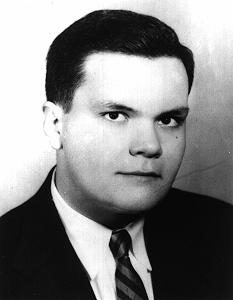 On this day in 1969, novelist John Kennedy Toole died by suicide by carbon monoxide poisoning in Biloxi, Mississippi at the age of 31. Born on December 17, 1937 in New Orleans. His posthumously published novel A Confederacy of Dunces won the Pulitzer Prize for Fiction in 1981. He also wrote The Neon Bible. Although several people in the literary world felt his writing skills were praiseworthy, Toole’s novels were rejected during his lifetime.
On this day in 1969, novelist John Kennedy Toole died by suicide by carbon monoxide poisoning in Biloxi, Mississippi at the age of 31. Born on December 17, 1937 in New Orleans. His posthumously published novel A Confederacy of Dunces won the Pulitzer Prize for Fiction in 1981. He also wrote The Neon Bible. Although several people in the literary world felt his writing skills were praiseworthy, Toole’s novels were rejected during his lifetime.
Toole received an academic scholarship to Tulane University in New Orleans. After graduating from Tulane, he studied English at Columbia University in New York while teaching simultaneously at Hunter College. He also taught at various Louisiana colleges, and during his early career as an academic he was valued on the faculty party circuit for his wit and gift for mimicry. His studies were interrupted when he was drafted into the army, where he taught English to Spanish-speaking recruits in San Juan, Puerto Rico. After receiving a promotion, he used his private office to begin writing A Confederacy of Dunces, which he finished at his parents’ home after his discharge.
Dunces is a picaresque novel featuring the misadventures of protagonist Ignatius J. Reilly, a lazy, obese, misanthropic, self-styled scholar who lives at home with his mother. It is hailed for its accurate depictions of New Orleans dialects. Toole based Reilly in part on his college professor friend Bob Byrne. Byrne’s slovenly, eccentric behavior was anything but professorial, and Reilly mirrored him in these respects. The character was also based on Toole himself, and several personal experiences served as inspiration for passages in the novel. While at Tulane, Toole filled in for a friend at a job as a hot tamale cart vendor, and worked at a family owned and operated clothing factory. Both of these experiences were later adopted into his fiction.
Toole submitted Dunces to publisher Simon & Schuster, where it reached noted editor Robert Gottlieb. Gottlieb considered Toole talented but felt his comic novel was essentially pointless. Despite several revisions, Gottlieb remained unsatisfied, and after the book was rejected by another literary figure, Hodding Carter Jr., Toole shelved the novel. Suffering from depression and feelings of persecution, Toole left home on a journey around the country. A journey that ended in Biloxi. Some years later, his mother brought the manuscript of Dunces to the attention of novelist Walker Percy, who ushered the book into print.
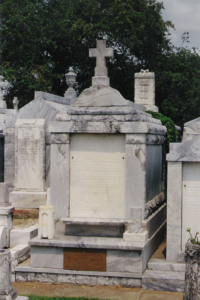 The Final Footprint
The Final Footprint
Toole died by suicide by running a garden hose from the exhaust pipe in through the window of his car on March 26, 1969. His car and person were immaculately clean, and the police officers who found him reported that his face showed no signs of distress. An envelope discovered in the car was marked “to my parents”. The suicide note inside the envelope was destroyed by his mother. He was buried at Greenwood Cemetery in New Orleans. Toole’s funeral service was private and only attended by his parents and his childhood nursemaid Beulah Matthews. The students and faculty at Dominican College were grief-stricken over Toole’s death, and the school held a memorial service for him in the college courtyard. The head of Dominican gave a brief eulogy; however, as the institution was Catholic, his suicide was never mentioned.
#RIP #OTD in 1973 playwright (Hay Fever, Private Lives, Design for Living, Present Laughter, Blithe Spirit, composer, director, actor, singer/songwriter (“Mad Dogs and Englishmen”) Noël Coward died at his home, Firefly Estate, in Jamaica of heart failure, aged 73. Firefly Estate
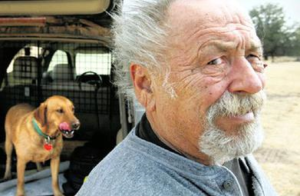 On this day in 2016, poet, novelist, and essayist Jim Harrison died from a heart attack in Patagonia, Arizona at the age of 78. Born James Harrison on December 11, 1937 in Grayling, Michigan. He was a prolific and versatile writer publishing over three dozen books in several genres including poetry, fiction, nonfiction, and children’s literature. He wrote screenplays, book reviews, literary criticism, and published essays on food, travel, and sport. Harrison indicated that, of all his writing, his poetry meant the most to him. He published 24 novellas during his lifetime and is considered “America’s foremost master” of that form. His first commercial success came with the 1979 publication of the trilogy of novellas, Legends of the Fall, two of which were made into movies. He was the recipient of multiple awards and honors including a Guggenheim Fellowship (1969), the Mark Twain Award for distinguished contributions to Midwestern literature (1990), and induction into the American Academy of Arts & Letters (2007). Harrison wrote that “The dream that I could write a good poem, a good novel, or even a good movie for that matter, has devoured my life.”
On this day in 2016, poet, novelist, and essayist Jim Harrison died from a heart attack in Patagonia, Arizona at the age of 78. Born James Harrison on December 11, 1937 in Grayling, Michigan. He was a prolific and versatile writer publishing over three dozen books in several genres including poetry, fiction, nonfiction, and children’s literature. He wrote screenplays, book reviews, literary criticism, and published essays on food, travel, and sport. Harrison indicated that, of all his writing, his poetry meant the most to him. He published 24 novellas during his lifetime and is considered “America’s foremost master” of that form. His first commercial success came with the 1979 publication of the trilogy of novellas, Legends of the Fall, two of which were made into movies. He was the recipient of multiple awards and honors including a Guggenheim Fellowship (1969), the Mark Twain Award for distinguished contributions to Midwestern literature (1990), and induction into the American Academy of Arts & Letters (2007). Harrison wrote that “The dream that I could write a good poem, a good novel, or even a good movie for that matter, has devoured my life.”
The Final Footprint
Unknown at this time.
Have you planned yours yet?
Follow TFF on twitter @RIPTFF

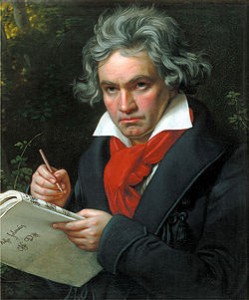
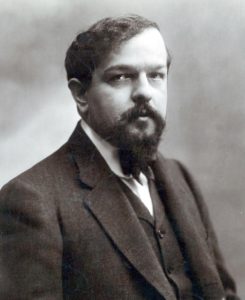
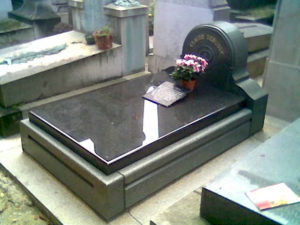
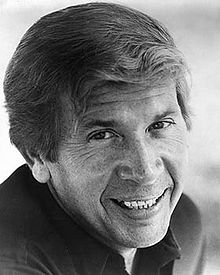 On this day in 2006, singer and songwriter, Buck Owens died in his sleep at his ranch in Bakersfield, California at the age of 76. Born Alvis Edgar Owens, Jr. on 12 August 1929 in Sherman, Texas. Evidently Buck was a donkey on the Owens farm and one day Alvis, Jr. announced that his name was also Buck and it stuck. Owens settled in Bakersfield in 1951 and pioneered what came to be known as the Bakersfield sound. From 1969 to 1986, Owens co-hosted the TV series Hee Haw with Roy Clark. My favorite Owens’ songs are “Together Again” and “Love’s Gonna Live Here.”
On this day in 2006, singer and songwriter, Buck Owens died in his sleep at his ranch in Bakersfield, California at the age of 76. Born Alvis Edgar Owens, Jr. on 12 August 1929 in Sherman, Texas. Evidently Buck was a donkey on the Owens farm and one day Alvis, Jr. announced that his name was also Buck and it stuck. Owens settled in Bakersfield in 1951 and pioneered what came to be known as the Bakersfield sound. From 1969 to 1986, Owens co-hosted the TV series Hee Haw with Roy Clark. My favorite Owens’ songs are “Together Again” and “Love’s Gonna Live Here.”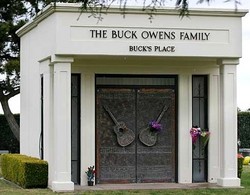
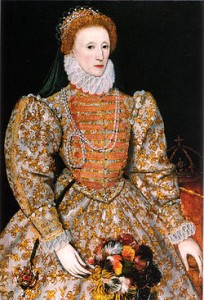
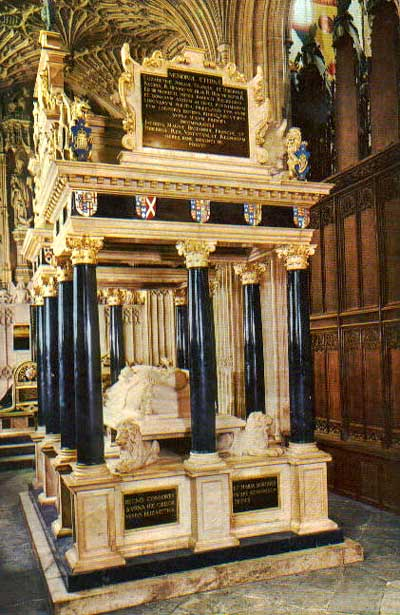
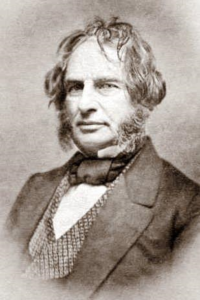

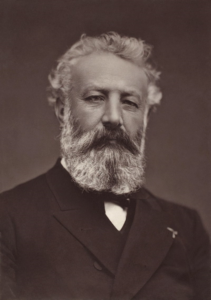

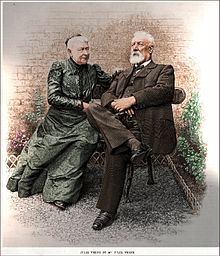
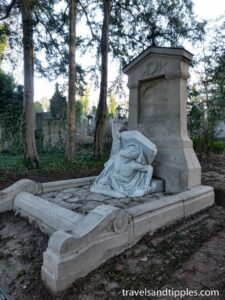


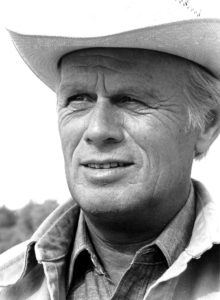
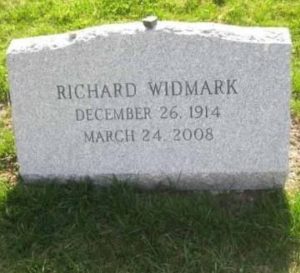

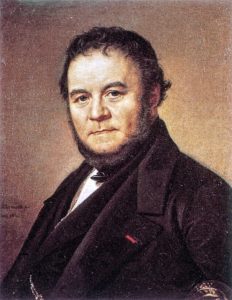
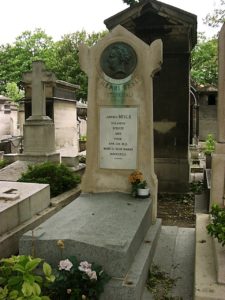
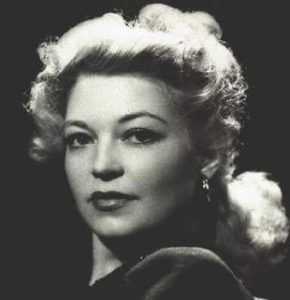
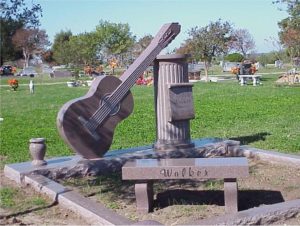 The Final Footprint
The Final Footprint
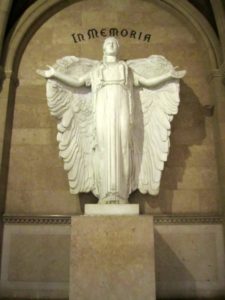 The Final Footprint – Taylor was entombed in the Great Mausoleum at Forest Lawn Memorial Park in Glendale, California, the day after her death in accordance with Jewish custom. The Great Mausoleum was fashioned after Campo Santo in Genoa, Italy and contains many of the most highly sought after final resting spaces within Forest Lawn Glendale. Within the Great Mausoleum is the Court of Honor where individuals are inducted as “Immortals” by Forest Lawn’s Council of Regents and the structure is protected by guards and is not accessible by the public. Time Magazine described it as the “New World’s Westminster Abbey”. Other notable Final Footprints at Forest Lawn Glendale include; L. Frank Baum, Humphrey Bogart, Lon Chaney, Nat King Cole, Natalie Cole, Sam Cooke, Dorothy Dandridge, Walt, Disney, Don Drysdale, Errol Flynn, Clark Gable, Jean Harlow, Michael Jackson, Louis L’Amour, Lash LaRue, Carole Lombard, Ida Lupino, Tom Mix, Merle Oberon, Red Skelton, Casey Stengel, Jimmy Stewart, Spencer Tracy, and Bobby Womack.
The Final Footprint – Taylor was entombed in the Great Mausoleum at Forest Lawn Memorial Park in Glendale, California, the day after her death in accordance with Jewish custom. The Great Mausoleum was fashioned after Campo Santo in Genoa, Italy and contains many of the most highly sought after final resting spaces within Forest Lawn Glendale. Within the Great Mausoleum is the Court of Honor where individuals are inducted as “Immortals” by Forest Lawn’s Council of Regents and the structure is protected by guards and is not accessible by the public. Time Magazine described it as the “New World’s Westminster Abbey”. Other notable Final Footprints at Forest Lawn Glendale include; L. Frank Baum, Humphrey Bogart, Lon Chaney, Nat King Cole, Natalie Cole, Sam Cooke, Dorothy Dandridge, Walt, Disney, Don Drysdale, Errol Flynn, Clark Gable, Jean Harlow, Michael Jackson, Louis L’Amour, Lash LaRue, Carole Lombard, Ida Lupino, Tom Mix, Merle Oberon, Red Skelton, Casey Stengel, Jimmy Stewart, Spencer Tracy, and Bobby Womack.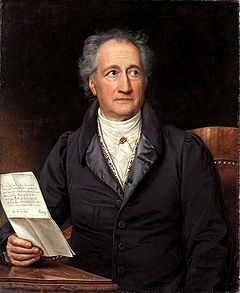
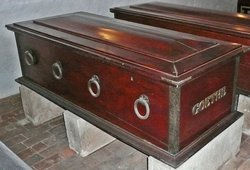
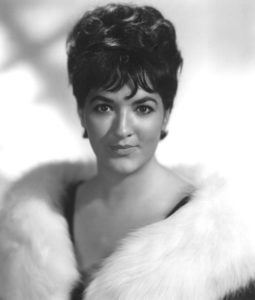
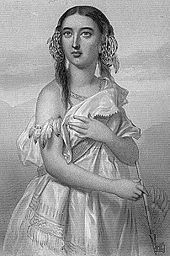
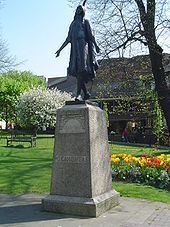


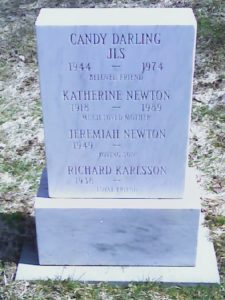
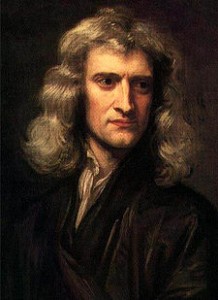
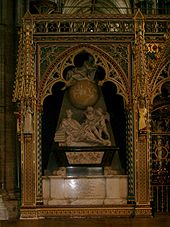
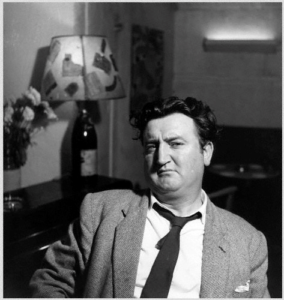
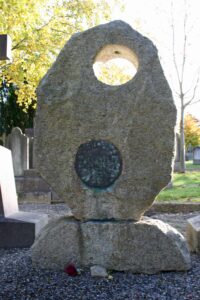



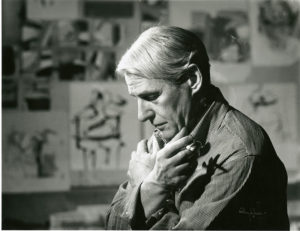


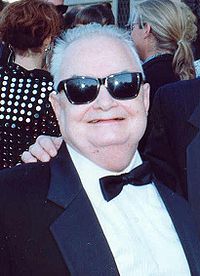
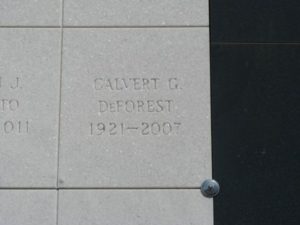
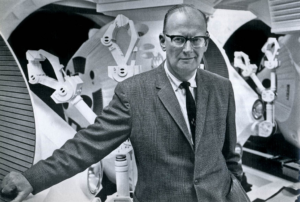

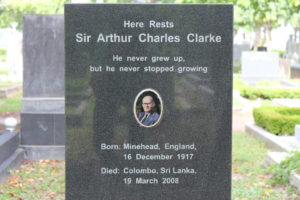
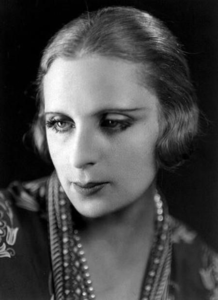


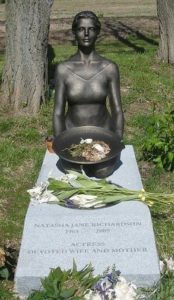 The Final Footprint
The Final Footprint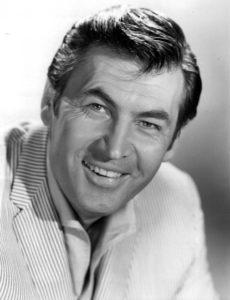 On this day in 2010, U. S. Navy and Marine
On this day in 2010, U. S. Navy and Marine
